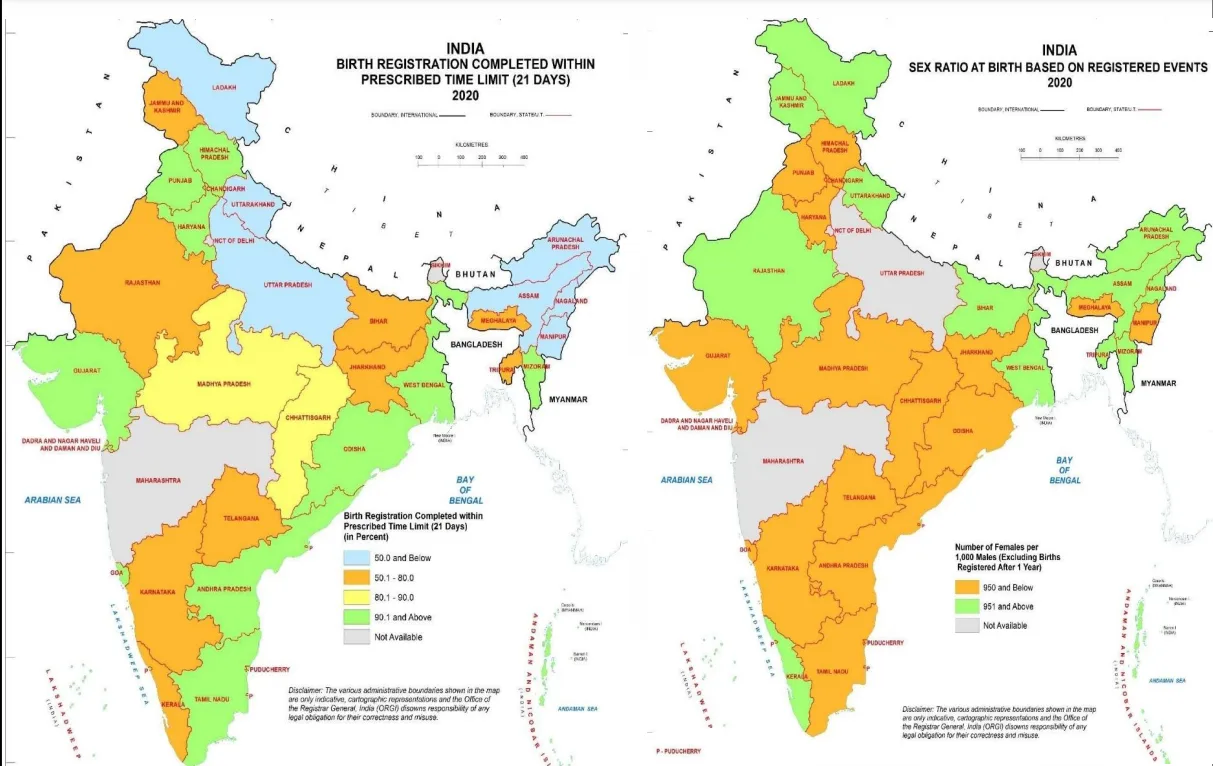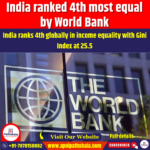CONTEXT:
Civil Registration System (CRS) which is the Union Government’s centralized portal to register births & deaths has been facing glitches for the past 4 months as revealed by several State Officials
GS 2 Paper: Population & Associated Issues GS 2 Paper: Government Policies & Interventions |
According to the Registration of Births and Deaths (Amendment) Act of 2023, all births and deaths in India must be digitally registered through this portal starting October 1, 2023.
The digital birth certificates will function as a single document for various services, including education, government employment, and marriage registration.
Furthermore, the centralized database will update the National Population Register (NPR), which currently includes 1.19 billion residents and acts as a precursor to the National Register of Citizens (NRC) under the Citizenship Act.
Civil Registration System (CRS) in India
The Registration of Births and Deaths Act (RBD Act), enacted in 1969, made the registration of births, deaths, and stillbirths mandatory in India.
At the Central Government level, the Registrar General, India (RGI) oversees and coordinates registration activities across the country.
The Chief Registrar is responsible for publishing an annual statistical report on the registered births and deaths.
However, the implementation of this statute is the responsibility of the State Governments, and the registration of births and deaths is carried out by officials appointed by these state authorities.
Recent Initiatives to Strengthen CRS
Standardized Software Application for Birth and Death Registration:
A software application for both online and offline registration of births and deaths has been developed. This application, currently available in English, is being customized into 13 Indian languages.
Database of Institutions:
A nationwide database of medical institutions has been created. The goal is to electronically oversee the registration of events happening in these institutions using an ICT-enabled platform.
Application to Monitor Institutional Events:
An SMS-based application called the “Event Monitoring System for Registration” has been developed and is currently undergoing pilot testing.
Data Digitization:
A project has been initiated to digitize old records for easier retrieval. This will facilitate the storage of registers in electronic format and allow for convenient access to the records.
National Population Register:
The Civil Registration System has been linked to the National Population Register (NPR).
India consists of 28 states and 8 union territories. Chief Registrar belongs to Health Department- 21 States/UTs Planning, Economics & Statistics Deptt.-12 States/UTs Panchayat, Local Administration & Revenue – 3 States/UTs 2.7 lakhs registration units Estimated births per year – 26 million Estimated deaths per year- 8 million |
ISSUES WITH CRS :
- Loopholes in the act.
- Mismatch with International Organization data.
- Rising Corruption
- RBD Act 2023: Registration of Births and Deaths through crsorgi.gov.in
WHAT SHALL BE DONE?
- Implementation of Uniform software application
- Portal availability should be done in vernacular languages.
- Integration with a database of Health institutions
- Capacity building of Registrars
- Extensive Multi-Channel Publicity
Explore our courses: https://apnipathshala.com/courses/
Explore Our test Series: https://tests.apnipathshala.com/










